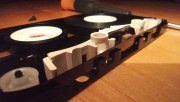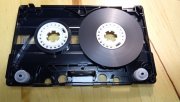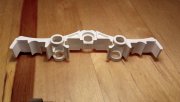Just airing some not unrelated thoughts ...
Back in 1963 the cassette was never intended to be a HiFi medium, and if it were, then I would suspect that the design would have been more 'robust', and possibly allowing for 1/2 track versions with provision for playing 1/4 track recordings in mono on a 1/2 track machine? The speed would bit a little faster (say 5cm/s to 6cm/s), and the tape width - possibly 1/4" as opposed to what we have now? I am aware that there was another 'cassette' which someone pointed out to me a few years ago, but never 'took off'. BUT, as someone in TH said - convenience wins in the market place; how very true.
When we think about it, the format is quite sensitive to slight misalignment; this shows up when recording-playback to and from other machines. And then there's shell differences to contend with. It's all a bit of a mess, but as many of us are cassette fans, we live with it.
I have about 30 cassette decks and have set about so that they can all Rec/PB to and from each other with little serious impact on frequency response and azimuth instabilities. Forget precise Dolby compatibilty of course - that's another subject, which just happens to bring me to the Music Cassette. How many in here have noticed that the PB of some of these tapes with 'Dolby' marked on is a hit-and-miss affair!? Yes, I'm aware that high frequencies are somewhat partially attenuated with time, but some of these manufactured 'Dolby' tapes are way off.



